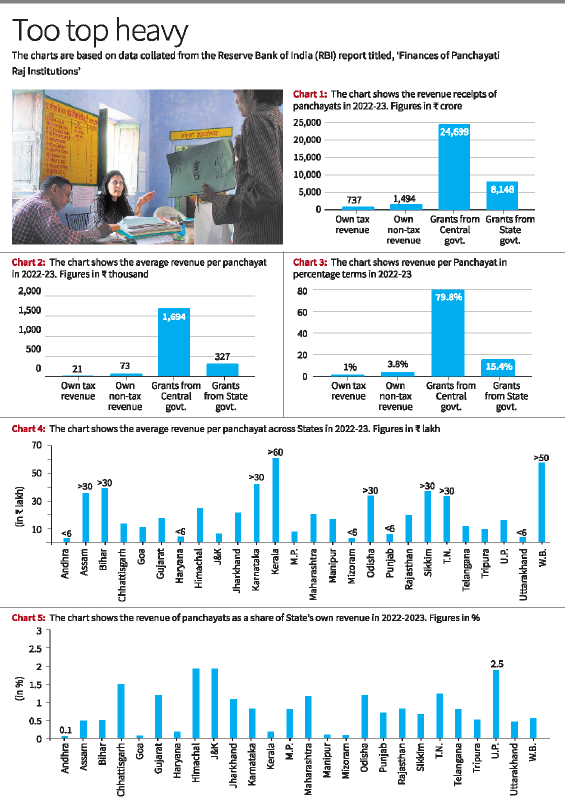ForumIAS announcing GS Foundation Program for UPSC CSE 2025-26 from 19 April. Click Here for more information.
Source-This post on RBI report on Panchayati Raj Institutions (PRIs) is based on the article “Panchayats earn only 1% of their revenue through taxes” published in “The Hindu” on 24th January 2024.
Why in the News?
According to a report by the Reserve Bank of India (RBI) on the finances of Panchayati Raj Institutions for 2022-23, local taxes and fees contributed only 1.1 percent to Panchayats’ total revenue.
What are the key findings of the report?

1) Decline in Panchayat average revenue – According to the report, the average revenue per Panchayat (including taxes, non-taxes, and grants) stood at 21.2 lakh in 2020-21, increased to 23.2 lakh in 2021-22, and then slightly declined to 21.23 lakh in 2022-23.
2) Panchayat own revenue sources:
a. During the study period, the Panchayats’ own revenues (Local taxes and fees) accounted for merely 1.1 percent of their total revenue.
b. Non-tax revenue, primarily from Panchayati Raj programmes and interest earnings, constituted 3.3 per cent of the total revenue receipts.
3) Grant reliance:
a. Panchayats rely heavily on property taxes, fees, fines, and grants, with approximately 95% of their revenue coming from grants provided by higher levels of government.
b. Specifically, 80% of the revenue was from Central government grants; only 15% was from State government grants.
4) Low Expenditure:
a. The average Panchayat expenditure dropped from 17.3 lakh in 2020-21 to 12.5 lakh in 2022-23, mainly due to higher spending during the pandemic.
b. Goa, Karnataka, Odisha, Sikkim, Kerala, and Tamil Nadu recorded the highest average Panchayat expenditures.
c. The revenue expenditure of panchayats accounts for less than 0.6% of the gross state domestic product across all states.
What are the source of Finance for PRIs?
1) Grants from the Central Finance Commission (tax devolution) and other grants provided by the Central Government.
2) Revenue collected by the State government on behalf of local bodies (State Finance Commissions Transfer), including tolls, taxes, duties, and fees, as well as grants-in-aid.
3) As per Article 243-H, PRIs are empowered to levy, collect, and distribute taxes, duties, tolls, and fees.
UPSC Syllabus- Polity and Nation/Report & Indices




